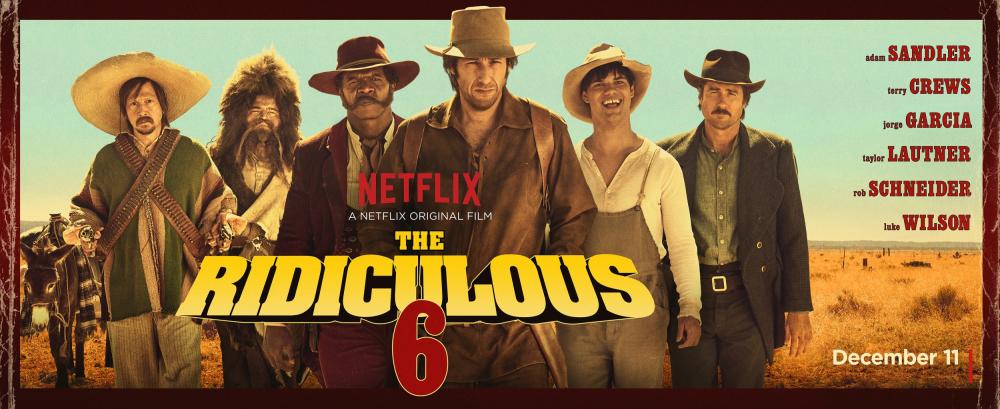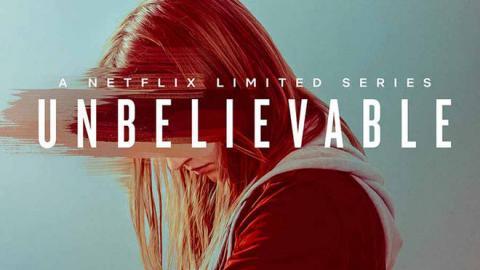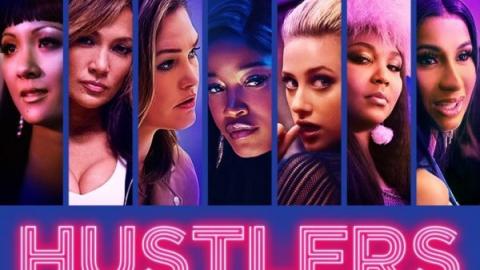Why Are So Many People Streaming The Ridiculous Six?
Share with friends

A movie with a 0% rating on Rotten Tomatoes just set the record for first month views on Netflix.
Adam Sandler’s most recent film, the straight to Netflix Ridiculous Six, is unfunny, not clever, and, to put it kindly, lazy. With a cast that includes Sandler, Taylor Lautner, Vanilla Ice, and Rob Schneider, it shouldn’t be surprising that the movie is hard to watch. I am not along in thinking this – not by a long shot; the film currently has a 0% rating on Rotten Tomatoes, meaning that 100% of the 28 movie critics that have reviewed the film panned it. One critic called it “must-avoid viewing.”
Cataloging the criticisms leveled at The Ridiculous Six is an ordeal in itself. The script is racist and misogynistic. Several native Americans who worked on the film walked off the set because they were so offended. Sandler’s performance has been called “half-asleep” and “the worst of his career,” which is saying something, considering Sandler has been nominated for the Razzie Award for Worst Actor nine times. So why does this exceptionally bad movie deserve to be talked about? What differentiates it from the hundreds of other bad movies on Netflix? Well, this particular bad movie just set a Netflix record for the most views in a movie’s first month of Netflix availability. This means The Ridiculous Six was viewed by more people in its first month on Netflix than old and new classics like Rocky, A Clockwork Orange, and Blackfish.
So why are people watching this movie? It could be because Netflix promoted it so heavily. The Ridiculous Six was on the front page of the site for the majority of December, and members received multiple emails informing them of the new addition. Surely, there were people who had heard that the film was in such poor taste who were curious and watched to learn if it was as bad as advertised.
But these viewers could only be the tip of the iceberg. Consider the appeal of Adam Sandler’s other movies, or at least those that have been released since Little Nicky. These films, which include Blended, Jack and Jill, I Now Pronounce You Chuck and Larry, and Mr. Deeds have received universally negative critical response but have been massively successful at the box office. Although American movie critics seem to hate Sandler, we’re making him considerably richer by watching nearly everything he puts out – and in large numbers.
Sandler’s movies are a fairly textbook example of niche marketing; it would make sense that a college educated movie critic for the New York Times and a 13-year-old boy would have differing opinions on whether a fart joke or naming a character “No Bra” is funny. As a film student with a major grounded in critical analysis, I must admit that any perception I have of Sandler’s work is impacted by my preference for quirky indie comedies. That being said, I believe the bias that movie critics have, as movie critics, leads to reviews that aren’t necessarily indicative of typical responses to Sandler films. Although the average IMDb rating for the film is just 5.0/10 stars, the majority of the user reviews left for the movie were positive; the average rating appears to be lower than expected because of a large quantity of 1 star reviews made by users outraged by the film’s content.
Delving into the content of favorable reviews, it appears that there is a certain anti-PC nature to Sandler’s works that his fans continue to enjoy. The anti-intellectualism in Sandler’s work aligns the comedian with the average American. Although highly self-referential, postmodern works may receive critical acclaim, they do not always garner large audiences. Take, for example, the dismal ratings that Community or Arrested Development drew during their original airs. Such favorability clearly appeals to the mainstream market, and allows Sandler’s works to be profitable. It is also highly plausible that there is a large segment of the population that still enjoys Sandler’s antics, and is just too proud (or snobby) to admit it. Critics that once enjoyed Sandler’s works now loathe them, despite their minor changes in content, originality, and maturity; it isn’t a stretch to say that critics, who generally are more in-the-know regarding microevolutions in film style, are more likely to find Sandler’s works to be more and more stale as they continue to come out. The average viewer, who watches films exclusively for enjoyment, is less likely to have such a change in opinion, but may feel shamed to admit it in the presence of such overwhelmingly negative critical response.
Although it may confuse some that Sandler’s audience remains, it certainly isn’t confusing why his films, including The Ridiculous Six, continue to be made. Through it all, Sandler’s works make money – and lots of it. Although one could argue that it would benefit society for only artistically valuable and socially conscious films to be made, green lighting The Ridiculous Six certainly benefited Netflix. Until American audiences stop watching Sandler’s increasingly offensive and lazy films, they will continue to be made, and The Ridiculous Six is neither the tip of the iceberg nor the end of the road.




